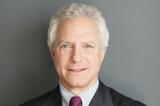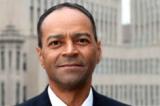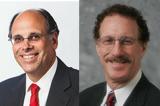May 3, 2016
Now that the government-sponsored enterprises (GSEs) Fannie Mae and Freddie Mac have been in federal conservatorship for over seven years, it is time to think about what happens next. GSE reform and its effect on future generations of homeowners requires careful consideration. Any outcome should aim to meet the needs of future homeowners, not the wants of political interests.
Recently, there has been a surprising amount of enthusiasm for “recap and release,” a catchy phrase that means allowing the GSEs to return to the pre-crisis days and operate under their old model, when private GSE shareholders profited when times were good and the taxpayers (most of whom are homeowners) picked up the tab when times were not so good. We do not think this is a sustainable or wise course of action. Nor do we think a fully privatized mortgage market without taxpayer support or a government catastrophic risk guarantee is prudent. As we have seen, foreign and domestic private capital markets show great reluctance to invest in US residential mortgage-backed securities (MBS) without an explicit federal guarantee, notwithstanding new laws that have substantially improved mortgage quality.
Fundamental change is necessary. We advocate for GSE reform that uses the “existing plumbing” of the mortgage market to develop a safer and more sustainable market bearing an explicit catastrophic-risk government guarantee that will serve each segment of the homebuying public.
The Harvard Joint Center for Housing has reported recently that as much as 85 percent of household formation in the next 20 years will be minorities and will represent the large majority of new homebuyers in the coming years. The changing demographics and its impact on the housing market cannot be ignored. Nor can the need of the explicit catastrophic-risk government guaranty requirement on conventional MBS. In this essay, we define fundamental principles to meet these two emerging needs and highlight our belief that meeting these needs is no longer optional.
These needs can be met only with a sustainable structure that provides consistent market execution, low down payment opportunity, and long-term fixed-rate mortgage finance, with the government taking as little risk as the market can bear to deliver this sustainable structure. Our proposal focuses on two goals:
-
Meeting the consumer need
-
Eliminating as much of the government risk exposure as possible
We propose a new Ginnie Mae 2.0 structure that utilizes the best of the GSEs’ core capabilities and Ginnie Mae’s functionality.
Key to our proposal is balancing the needs of future homebuyers and the demands of MBS buyers. MBS buyers are necessary to maintain the stability and liquidity of the housing finance market and meet the needs of future homebuyers. As a result, an explicit catastrophic-risk guarantee for the conventional mortgage market is necessary. Otherwise, the conventional mortgage market will not be a significant source of mortgage finance, and the needs of homebuyers will not be met with any reliable source of private capital. Instead, the mortgage market would be forced to rely almost entirely on the Federal Housing Administration (FHA), US Department of Agriculture (USDA), and Department of Veterans Affairs (VA) for mortgage loans. We cannot expect the FHA and other government-insured loan programs to meet America’s vast needs, especially since government programs will always be at the mercy of political “trade winds.”
To meet the critical needs of future homebuyers and MBS buyers, we’ve developed some principles that should guide the reform debate.
Overview of the Core Components and Principles of GSE Reform
-
An explicit catastrophic-risk federal guarantee on conventional MBS paid for by the borrower and subject to federal oversight, similar to the current Ginnie Mae program
-
Preservation of the affordable 30-year fixed-rate mortgage
-
Entities issuing government-guaranteed MBS have a duty to serve low- and moderate-income homebuyers across all markets they serve and through all economic cycles
-
Support for continued availability of interest rate locks for mortgage applicants, currently provided through a “To Be Announced” (TBA) structure
-
A requirement that private-credit enhancement attach to mortgages before they are delivered to any secondary market or government agency
-
Transparency in the automated underwriting systems
A Model to Incorporate These Principles: “Ginnie Mae 2.0”
Ginnie Mae 2.0 retains the best functions currently supporting the conventional market at Fannie Mae and Freddie Mac and drops their more harmful aspects (e.g., large mortgage portfolios and expanded interest rate and credit risk). It requires the conservator to transfer the necessary components of the GSEs—such as the key employees, underwriting, and operating systems—to Ginnie Mae. With this new capacity, personnel, and expected volume, it would likely also require Ginnie Mae to become a “stand-alone” government corporation that is not part of the US Department of Housing and Urban Development. This is essential to attract and retain the leadership and personnel to run an enhanced Ginnie Mae.
The structure would allow the GSE “legacy” portfolios to retain the necessary support operations, the existing Treasury relationship, and employees to complete the run-off of their legacy obligations under conservatorship, while moving the necessary operating functions under Ginnie Mae to support the future needs of the conventional mortgage market.
Some other GSE reform models propose forming new government guarantors or other hybrid public-private corporations to perform this function. Ginnie Mae is the most viable solution with the least disruption because the US mortgage market is already familiar with Ginnie Mae, as are most domestic and foreign investors. We would not have to convince the investor market to buy Ginnie Mae MBS because they already purchase these instruments. Ginnie Mae 2.0 would allow the best of the needed GSE operations to continue (inside Ginnie Mae) with the least amount of market and operational disruption, while meeting the MBS buyer need of the explicit government guaranty. Other proposals seem too complicated or create unnecessary additional structures to meet the consumer and MBS buyer needs. Too many other proposals don’t seem sustainable or simply don’t remove the “private gain and public risk” that partly caused the housing crisis and continues to haunt us.
Undoubtedly, there will be nuanced demands coming from the high concentration of household formation in African American, Asian, and Hispanic communities. This made us focus on a conventional housing finance structure that brings as little disruption as possible, respecting the stated wishes of the presidential administration and Congress that there won’t be a “recap and release” outcome. Ginnie Mae 2.0 looks to be the safest way to build a sustainable platform to bring proven market stability to meet the needs of a materially changing demographic. Under Ginnie Mae 2.0, we have provided two separate models for consideration. Both can meet the two goals stated above, but congressional appetite will determine which will be used.
The Ginnie Mae 2.0 Models
Model A
Under this model, the new Ginnie Mae 2.0 would collect a minimal, single guarantee fee for all conventional MBS just as Ginnie Mae charges today on securities backed by FHA and VA loans. The fee would cover the new cost of the explicit catastrophic-risk government guarantee on conventional loans, similar to the risk Ginnie Mae guarantees today on FHA and VA loans. The fees may be slightly higher than the cost of current Ginnie Mae guarantees on FHA and VA loans because the conventional loans would be credit-enhanced by private entities (such as private mortgage insurance) who bear some counterparty risk to Ginnie Mae that is not present in the government insurance programs. However, that cost is mostly mitigated because the Ginnie Mae guarantee is truly a remote loss; there would be virtually no taxpayer risk because the private-credit enhancement would cover typical and stress scenario frequency and severity of loss, and because Ginnie Mae operates on a “break-even” model, rather than the GSE model that strives for material shareholder profit.
While there would be numerous logistical details to complete this change and legislation giving Ginnie Mae this authority, this model could produce a competitive conventional mortgage market for future homebuyers, provide for a rational duty to serve for those issuing the new Ginnie Mae conventional MBS, and protect taxpayers by limiting the role of the government to a “catastrophic” MBS guarantor function, eliminating the need for the government to take any interest rate or credit risk. Investor markets would cheer this change because they would have many new Ginnie Mae MBS available, borrowers would likely see a better execution in loan pricing, policymakers would see value in shifting risk exposure to the private market, and consumer advocates would likely embrace the duty-to-serve requirements on the hundreds or thousands of new issuers of the Ginnie Mae 2.0 securities.
Legislation authorizing the changes to create Ginnie Mae 2.0 should include the following:
-
Credit quality guidelines similar to those in the marketplace today (qualified mortgage loans)
-
Flexibility to adapt and respond to borrower demand, such as allowing for updated and alternative credit-scoring models without additional legislation
-
Small lender considerations, such as preserving the cash window through expanded membership in the Federal Home Loan Banks; this would not prevent a small lender from continuing to sell directly to another approved Ginnie Mae 2.0 issuer
Model B
Similar to model A, the core necessary functions, employees, and operations of the GSEs would be transferred to Ginnie Mae. Under model B, Ginnie Mae would be a purchaser of mortgages, an issuer of MBS securities, and a secondary markets maker (like the GSEs do today), with two major exceptions:
-
All mortgages sold to Ginnie Mae 2.0 would require a private-credit enhancement attached to the loans before the Ginnie Mae 2.0 guarantee attaches, with coverage of no less than 50 percent of the underlying individual loan. This would allow the new Ginnie Mae 2.0 to function as Fannie Mae and Freddie Mac functioned, but with significantly reduced credit risk.
-
At no time should mortgages be in the “warehouse” of Ginnie Mae 2.0 for more than 180 days, and at no time should Ginnie Mae 2.0 be allowed to make commitments to purchase mortgages without a similar commitment to sell them. This ensures the new Ginnie Mae 2.0 would always operate with a minimum “on-balance sheet” portfolio of mortgages. (Of course, Ginnie Mae 2.0 would need to plan for the remote possibility of absorbing defaulted mortgage loans and have a plan for disposing of them in the market.)
How Is This an Improvement for Potential Homeowners and Market Practitioners?
Ginnie Mae 2.0 would benefit consumers in the following ways:
-
Government corporation (break-even) profitability targets: Conventional mortgage costs would probably go down because there would be no need for the new entity to achieve return thresholds historically targeted by the GSEs.
-
Competition: As the vehicle to the secondary markets, Ginnie Mae 2.0 would ensure a constant “best-in-class” secondary market execution and constant competitive loan pricing. Additionally, ensuring that loan by loan, front-end private-credit enhancement is attached to the loans before they get to Ginnie Mae (or the secondary market) would ensure there is reasonably low-cost durable availability to financing, facilitated by private mortgage insurance or other forms of credit enhancement. Further, there would be a stronger appetite for alternative credit-scoring models to expand opportunity for creditworthy homebuyers.
-
Price reduction and transparency: Repetitive Loan Level Price Adjustments currently charged by the GSEs could be eliminated if the credit risk is borne by quality-capitalized and regulated private entities.
Market practitioners would benefit in the following ways:
-
Stability: As a government corporation providing “catastrophic risk” and “break-even” profit requirements, Ginnie Mae would have no incentive to pursue policies to enhance Ginnie Mae profitability or prioritize one marketplace participant over another.
-
No volume discounts: The guaranty fee proposed would apply to all participants regardless of size.
-
Multiple points of access: Because Ginnie Mae 2.0 preserves the Federal Home Loan Banks in the same role they have today but with expanded eligibility, there would be multiple points of access for lenders of all sizes.
-
Private capital: Lenders could provide competitive conventional mortgage pricing for their customers and rely on the durability and consistency of front-end (deeper-cover) credit enhancement.
Regulatory Framework
Ginnie Mae 2.0 would be subject to significant oversight by the Federal Housing Finance Agency, which would continue to regulate the Federal Home Loan Banks and (hopefully) play a new liaison role in coordinating federal housing policy between the conventional market and the government insurance programs of the FHA, VA, and USDA. The state banking and insurance regulators would set the capital, reserve, and leverage ratios for the private-credit enhancement providers upon which the new conventional market would rely.
Conclusion
Any solution for the future of the GSEs needs to be based on simple principles and meet the two goals we believe are strategic imperatives for America. Ginnie Mae 2.0 could meet those goals and the needs of current and future homebuyers and MBS buyers in the least disruptive and most sustainable manner.
Gary Acosta is cofounder and CEO of the National Association of Hispanic Real Estate Professionals, the nation’s largest minority real estate trade association, with over 20,000 members and over 35 local chapters. Acosta is a 25-year veteran in the mortgage industry and founded several successful mortgage, real estate, and technology companies, including Prado Mortgage, New Vista Asset Management, and RealEstateEspanol.com. In 2013, he cofounded The Mortgage Collaborative, a cooperative of mortgage companies working together to increase profitability and market share. Acosta was an inaugural member of the consumer advisory board of the Consumer Financial Protection Bureau. In 2003, Realtor Magazine named him one of the “25 Most Influential People in Real Estate” and Hispanic Business Magazine once named him one of the “100 Most Influential Hispanics in America.” Acosta holds no financial interest in Fannie Mae or Freddie Mac.
Jim Park is CEO of the Mortgage Collaborative, which represents more than 50 top lenders in the country originating more than $85 billion in mortgage loans. He is also president of AREAA (Asian Real Estate Association of America) Global Inc. He was the 2013 chair of AREAA and was the association’s president and CEO from 2005 to 2011. In his personal business ventures over the last 10 years, Park launched and managed several real estate and mortgage banking companies. He has broad and in-depth knowledge of the housing industry from his time in the private, government, regulatory, and nonprofit sectors throughout his career, which includes time at Freddie Mac and the Federal Housing Administration. Park is a past chair of the Federal Reserve's consumer advisory council and the Asian Pacific American Institute for Congressional Studies, a nonpartisan organization focused on developing the future elected leadership within the Asian American community. In addition, Park has sat on several corporate boards and advisory councils and served on numerous nonprofit and housing-related boards, including the Low Income Investment Fund and Mercy Housing. Park holds no financial interest in Fannie Mae or Freddie Mac.
Joseph J. Murin is vice chairman of Chrysalis Holding LLC and chairman of JJAM Financial LLC. He was previously CEO of ANC Acquisitions LP and cofounder and chairman of The Collingwood Group LLC. Murin was president of Ginnie Mae from 2008 to 2009. Before being nominated for that role, he had more than 35 years of experience in the financial services, mortgage, and banking industries, which included time as CEO of financial organizations such as Century Mortgage, Basis 100, Lender’s Service Inc., and MSNi LLC. He began his career with Pittsburgh National Bank in 1972. Murin holds a bachelor’s degree in business from National Louis University. Murin holds no financial interest in Fannie Mae or Freddie Mac.






















